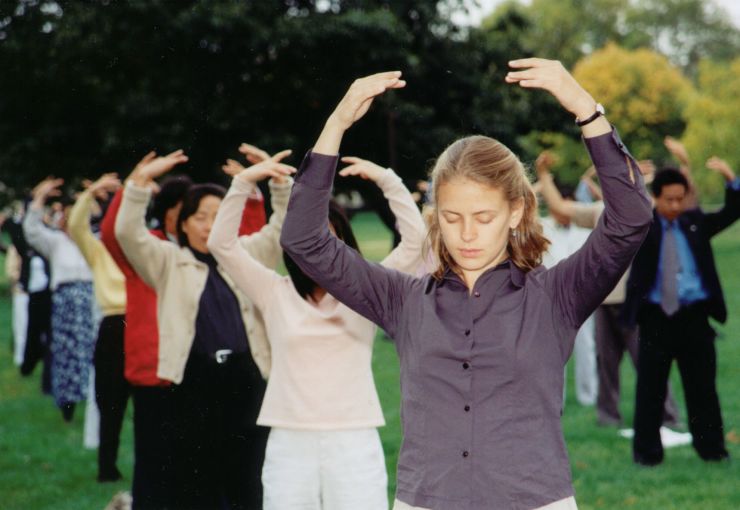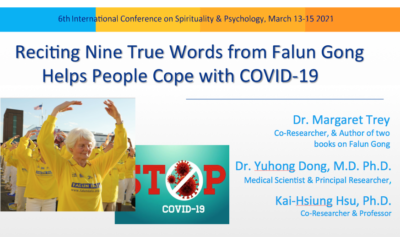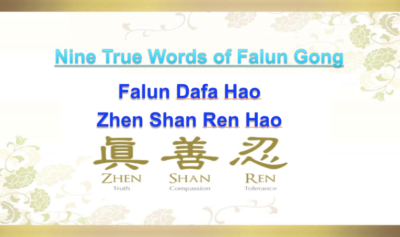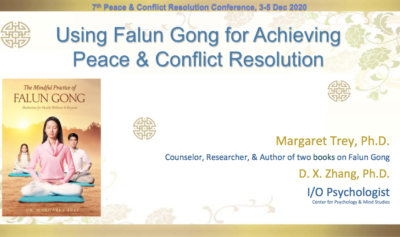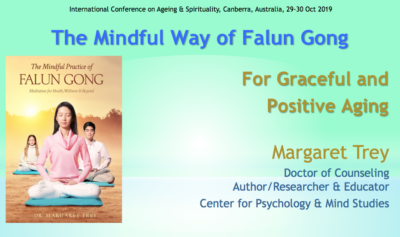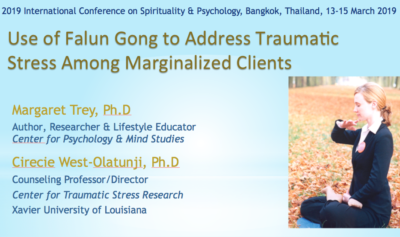ABSTRACT:
Eastern meditative approaches have existed since time immemorial in traditional cultures, predating Christianity. That these disciplines are still being practiced today indicates that these traditional practices were and still are beneficial to humankind.
Although their integration with counseling is still foreign for some, many in the West have embraced these practices as a way of life for their health and well-being. This trend has encouraged many counselors to follow suit in order to cater to the varied and ever-changing needs of their clients.
Falun Gong is one such mind-body, spiritual meditative system that holds promise for counseling integration. The practice’s beneficial effects and integration possibilities remain relatively unknown and undocumented.
The main purpose of this paper is to present case examples illustrating the benefits of the practice and the feasibility of integrating Falun Gong with counseling—to help people toward self-healing and realizing their purpose in life.
Keywords: Falun Gong, Falun Dafa, counseling, meditation, cultivation practice, benefits, health, wellness, self-healing.
Falun Gong and Counseling
This is the introduction to the paper published on Vistas online.
As researchers and writers have indicated, over the past three decades, an
increasing number of people in the West are turning to Eastern meditative practices.
People from all walks of life, including CEOs and executives of big corporations like Apple, Google, Intel, and Yahoo!, are bringing meditative practices into the work place. Many are drawn to Eastern practices because these approaches not only complement their values, beliefs, and lifestyles, but they also have healing benefits.
As more people in the West are attracted to Eastern meditative practices, the
potential for integrating meditative practices with counseling has become more feasible. Delmonte (1985) noted that meditation was already extensively used as an adjunct to counseling and psychotherapy in the West as early as the 1980s.
Numerous counselors and other health professionals have realized the integration potential and the diverse beneficial effects of these Eastern meditative movement practices (Atwood & Maltin, 1991; Bogart, 1991; Carpenter, 1977; Easton, 2005; Goleman, 1976; Lau, 2010a; Marlatt & Kristeller, 1999; McCown, 2004; Meyers, 2016; Ospina et al., 2008; Perez-De-Albeniz & Holmes, 2000; Schopen & Freeman, 1992; Shallcross, 2012; Singer, 2006; Trey, 2016b; Walsh & Vaughan, 1993).
Note: Paper was originally published on Vistas, a project sponsored by the American Counseling Association. Click on this link to download the full article: http://www.counseling.org/docs/default-source/vistas/falun_gong.pdf?sfvrsn=4
 Dr. Margaret TreyAuthor, Researcher & Wellness Advocate
Dr. Margaret TreyAuthor, Researcher & Wellness Advocate
